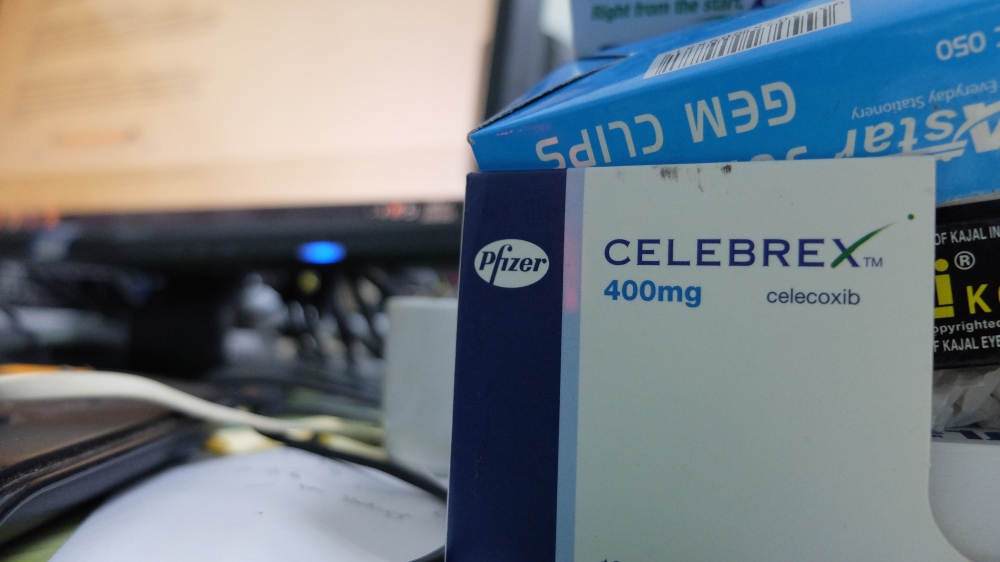NSAIDs, Optum, and the Future of Real World Data

Credit: Shutterstock
NSAIDs are medications that you can buy at the grocery store that reduce inflammation. However, they have serious issues that are beginning to be recognized by health insurance groups. However, that represents a much bigger trend that will reshape healthcare as we know it. Let’s dig in.
NSAID Problems
NSAID stands for Non-steroidal Anti-inflammatory Drug. These are medications that reduce inflammation. There are two types. The original NSAIDs like Mortin/Ibuprofen and Alleve and then newer COX-2 selective NSAIDs like Celebrex. The problem with the newer medications is that while they were engineered to reduce stomach ulcer side effects, that engineering also magnified cardiac side effects. In the end, many of the newer COX-2 drugs got pulled off the market. That left only one still on the market-Celebrex.
NSAIDs and Bone Healing
We’ve known for a while that these commonly used drugs can negatively impact normal bone healing. However, despite that, they are still commonly prescribed to patients that have fractures. Given that every unhealed bone is a HUGE expense to health insurers, how can an insurance plan begin to modify physician behavior to prescribe fewer NSAIDs after a fracture? That’s where Optum comes in.
What Is Optum?
Basically, Optum is the healthcare innovation group of United Healthcare. Here’s a good description of how the two companies interrelate:
“Optum is captive of UHG. UHC (United Health Care) takes care of the healthcare i.e. insurance business whereas OGS (Optum Global Solutions) caters to all the technical needs of UHC. Optum develops and maintains all the products and services required by UHC.”
Optum is also heavily into healthcare data analysis. With all of that claims data being produced by United Healthcare, they are sitting on a gold mine that can show trends on how to deliver better care at lower prices.
The New Paper on Fracture Non-union and NSAIDs
The new research used all of that United Healthcare data to look at prescriptions of COX-2 NSAIDs and then later payments for fracture non-union. The study found an association between COX-2 drugs/opioids and non-healing fractures (1). That real-world data fits with most of what we know about how these drugs impact bone metabolism.
Why Is this Study and Others Like It a Big Deal?
Insurers are sitting on mountains of health data. If that data is mined in the right way, they can begin to develop insights into which treatments are the best and which will lead to guidelines based on real-world data. Meaning while medical research is rife with conflicts of interest, if you’re an insurance company, you only have one aim-efficiency. How do I help doctors make decisions that lead to the most efficient utilization of care? That should be agnostic to the bottom line of healthcare vendors or drug/device manufacturers.
For example, the COX-2 drug they’re talking about in this paper is prescription Celebrex made by Pfizer. This one drug was responsible for 1.1 billion USD in sales in 2019 and is expected to account for almost 2 billion by 2026. So anything that rains on that parade will be fought off by Pfizer. That means university physicians who are bought and paid for by Pfizer who will push hard to make sure that unfavorable Celebrex studies are muted. That also means that these same physicians will populate medical guidelines for professional organizations with a recommendation for COX-2 drugs (the only one being Celebrex).
So how does Optum bend that enormous pressure being applied by Pfizer to increase Celebrex sales? It needs to develop and publish real-world data that shows the issue to physicians and then use that to create internal guidelines limiting Celebrex prescriptions in fracture patients. It can also intervene when Celebrex is prescribed when a fracture code is submitted to United. Meaning it can send messages to doctors and patients about this drug leading to fracture non-union.
So while this may seem like a small little paper based on health claims data, it’s actually a very big paradigm shift. It represents insurer technology groups beginning to play a much bigger role in shaping health care policy and aligning payments in the direction of maximum efficiency. That’s a game that will eventually have big winners and losers in the healthcare industry.
The upshot? I suspect that we’ll see more real-world claims research in the next 5 years, as healthcare innovation groups begin to crunch the gold mine of data that they’re sitting on. In addition, I suspect we’ll see major academic pushes to change the perception of real-world data analysis. Meaning that physicians of the 2030s will likely view studies like this very differently than today’s “Everything needs an RCT” doctor.
_________________________________
References:
(1) White AE, et al. The Effect of Nonsteroidal Anti-inflammatory Drugs and Selective COX-2 Inhibitors on Bone Healing. HSS Journal. Volume: 17 issue: 2, page(s): 231-234

If you have questions or comments about this blog post, please email us at [email protected]
NOTE: This blog post provides general information to help the reader better understand regenerative medicine, musculoskeletal health, and related subjects. All content provided in this blog, website, or any linked materials, including text, graphics, images, patient profiles, outcomes, and information, are not intended and should not be considered or used as a substitute for medical advice, diagnosis, or treatment. Please always consult with a professional and certified healthcare provider to discuss if a treatment is right for you.
